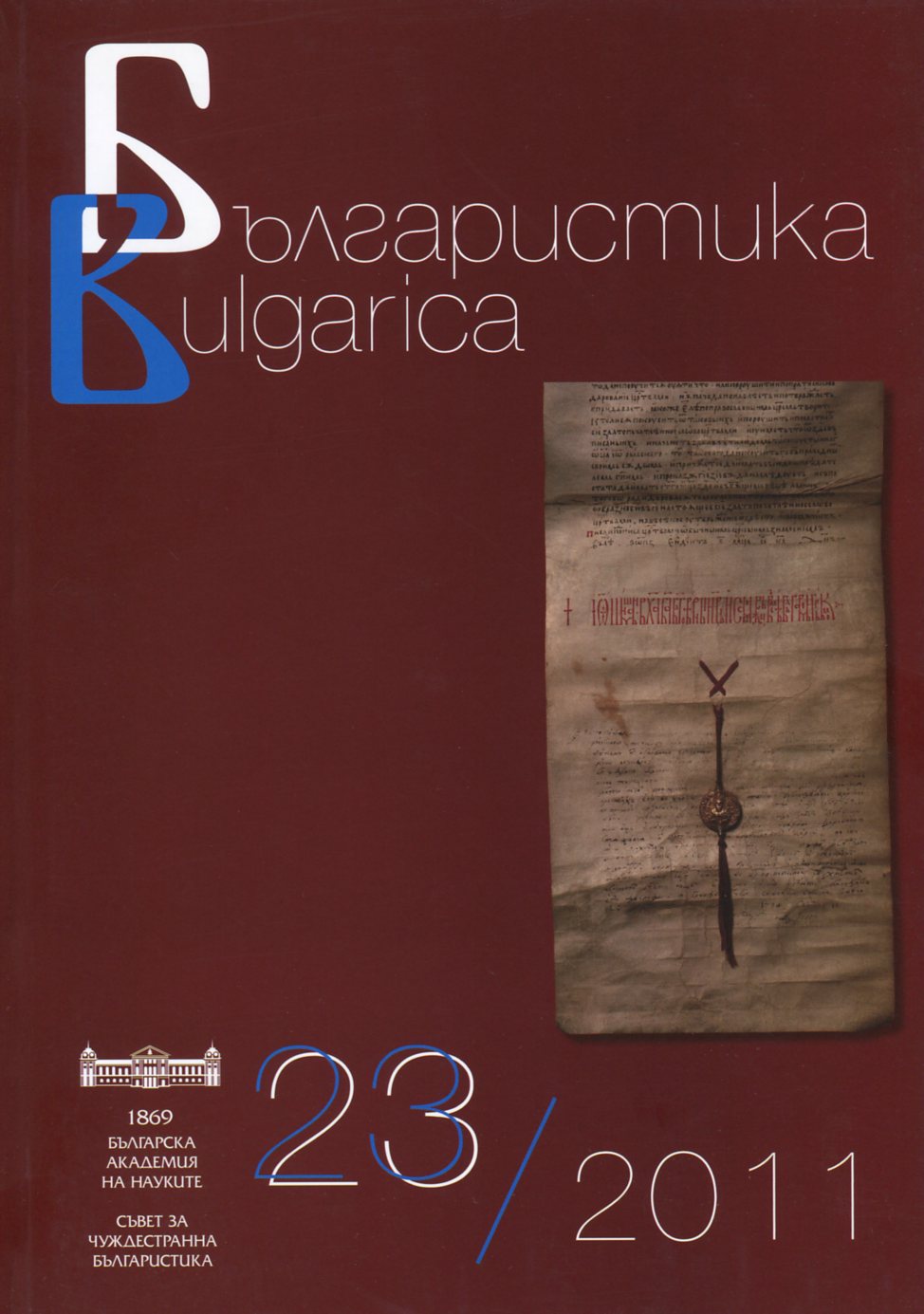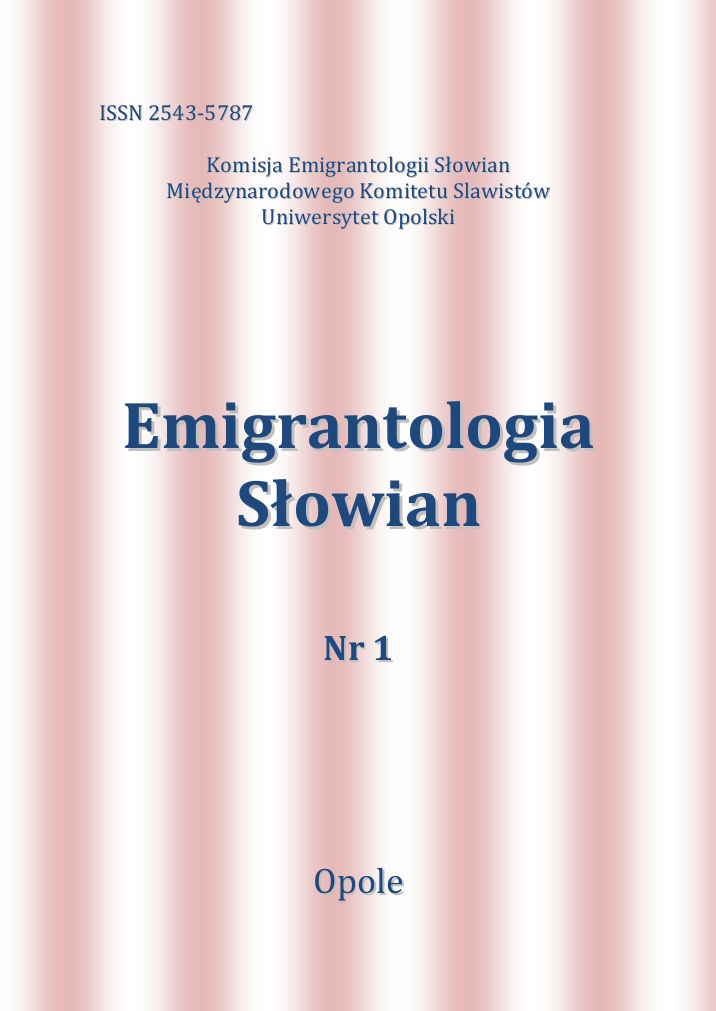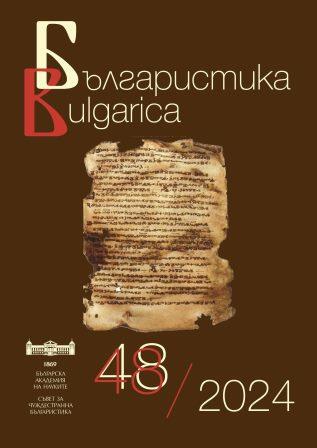
Книги 2015–2016
Selected bibliography in the field of Bulgarian Studies published in 2015-2016
More...We kindly inform you that, as long as the subject affiliation of our 300.000+ articles is in progress, you might get unsufficient or no results on your third level or second level search. In this case, please broaden your search criteria.

Selected bibliography in the field of Bulgarian Studies published in 2015-2016
More...
Selected bibliography in the field of Bulgarian Studies published in the current year.
More...
Selected bibliography in the field of Bulgarian Studies published in the current year
More...
Selected bibliography in the field of Bulgarian Studies published in the current year
More...

The article analyzes the results of a survey with students from the pedagogical specialties of the Pedagogical College - Pleven at the University of Veliko Turnovo „St.St. Cyril and Methodius". The measurement procedure reflects the students' opinion about the application of pedagogical animation in teaching, which is based on the theatrical pedagogical interaction. The survey was conducted in order to determine the degree of recognition of the nature of pedagogical animation, the degree of readiness to apply innovative forms and methods of pedagogical animation and the degree of satisfaction of students in their basic preparation.
More...
The article presents an analysis of the theoretical statements in relation to language, sociolinguistic and sociocultural competences and the results of empirical research through a survey with primary teachers about their opinion on the level of formation of language, sociolinguistic and sociocultural competences in primary school pupils. Teachers' views on distance learning in relation to limiting the spread of Covid-19 are analyzed. Specific conclusions are made.
More...
The article traces the path of one of the great Bulgarian fiction writers, established between the two world wars. An author with strongly leftist convictions, Georgi Karaslavov became a figure of power in the second half of the 20th century, which determined the pathos of his work, which appeared within the regime. It actively participates in the formation of the communist mythology, in the display of fetishes and values, which are an outright falsification not only of the historical facts, but also of the left ideology, which is very popular in the interwar Bulgarian period.
More...

The article aims to present basic theoretical problems connected with studying folklore in the secondary stage of Bulgarian schools. The first part offers a brief diachronic review of the theoretical paradigm of Bulgarian folklore research, presenting the transition from the narrow philological understanding of folklore as “national poetic creativity” towards its wide sociological interpretation as “a type of creative culture”. In the second part of the article two curricula for the fifth grade, in which folklore is a key component, are analysed and compared – the one from 2007/2010 academic years and the current one, implemented since 2016/2017. The main goal of this part is to demonstrate how and how much the Literature curricula offer an opportunity for studying folklore in alignment with current theoretical stipulations in Bulgarian folklore research.
More...

The object of study in this paper is the heortological nomenclature established in the Old Bulgarian and Church Slavonic texts. This investigation sets out to extract the calendar names of the feasts and of the run-up to them from records, which appeared in different years and belong to different genres. After that they are subjected to a linguistic analysis, which includes observations on the nomination techniques in Christian heortology, the phenomena synonymy, doublets and polysemy in the names of the Christian calendar and their syntagmatics and epidigmatics.
More...

Emiliyan Stanev’s unfinished short novel The Black Monk still remains on the margins of his oeuvre, and also of research interest on the part of Bulgarian literary studies. On the other hand, the plot and the eponymous character fit it into a wide network of works by English, German, French, Russian and other authors, in the traditions of Gothic, Romanticism, Realism and their varieties, where the ‘Black Monk’ motif is a locus communis. I call the potential of such loci communes to form sets of works partially connected by separate, often contextually undetermined threads, polyvalent intertextuality. Comparing through it works by different authors, from different genres and nationalities, I come to the conclusion that their interaction can be described, in terms such as de- and reterritorialization (Deleuze and Guattari), as rhizomatic and gothic. This paper does not range over historical-philosophical, ethical, socio-political, etc. aspects of Stanev's work.
More...
The article examines the life and work of Italo Calvino, a writer with a huge contribution to Italian literature. His life path, political and moral views are examined. The text analyses Calvino’s work and how his life experiences influenced him.
More...

Mefküre Mollova was the first Turkish woman and university professor in Bulgaria, who defended her Ph.D. thesis in the field of turkology and gained international fame for her research. She is the author of over 150 publications in prestigious international journals that continue to be cited today. Mefküre Mollova was among the founders of the Turkish Philology at the University of Sofia. She had worked for only about 7 years (1953-1961), when she and her husband were dismissed from their academic positions on false claims, and the Department was closed. She remained outside the academia until the end of her life.
More...
Data about scientific events in the field of the humanities in Bulgaria in the first half of 2024.
More...

The paper gives information on a medieval Slavonic translation of the Vita of St. Sabbas the Sanctified. A Middle Bulgarian copy of the translation (manuscript no. 226 of the 14th century, kept in Hilandar Monastery on Mount Athos) is edited with variant readings from two other copies: Hilandar 432 and Dragomirna 706.
More...